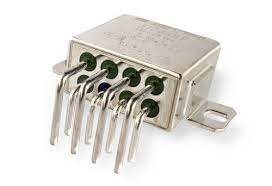What is the Difference Between Latching and Non-Latching Device?
Relays are essential components of electrical circuits that help in the switching of power and control signals between different parts of the system. They work as a kind of an electrical switch that opens or closes the circuit when an appropriate signal is given. There are two main types of relays – latching and non-latching devices. In this article, we’ll discuss the differences between them, what is a latched relay, what is the difference between latching and impulse relay, and why use a latching relay.

What is a Latched Relay?
A latched relay is a type of relay that remains in its last switched position even after the power supply is disconnected. This type of relay is also known as a bi-stable relay or a keep relay. It requires two electrical pulses to change its state – one to set it and another to reset it. In a latched relay, the two coils are used, one to set the relay, and the other to reset it. When a current is passed through the set coil, it magnetizes the relay’s core and pulls the contact to its normally open position, completing the circuit. Once the set coil is de-energized, the relay’s core remains magnetized, keeping the contact in its last position. To reset the relay, a current is passed through the reset coil, which magnetizes the core in the opposite direction, pulling the contact back to its normally closed position.
What is the Difference Between Latching and Impulse Relay?
Latching and impulse relays are two types of relays used for different applications. A latching relay remains in its last switched position even after the power supply is disconnected. In contrast, an impulse relay returns to its original position when the power supply is cut off.
An impulse relay requires a single pulse to switch from one position to another, whereas a latching relay requires two pulses – one to set and another to reset it. Impulse relays are commonly used in applications where a brief electrical signal is required, such as in security systems, time-delay circuits, and alarms.

Why Use a Latching Relay?
Latching relays offer several advantages over non-latching relays. They are more reliable, consume less power, and require fewer components to operate. Since they do not require a continuous power supply to maintain their state, they are suitable for battery-powered applications, where energy conservation is crucial. Latching relays are also used in applications where it is essential to maintain a particular state even after the power supply is cut off. For instance, in a security system, a latching relay is used to maintain the alarm state even if the power supply is disconnected. It can only be reset by providing a specific input signal.
Another application of latching relays is in power-saving systems, where they are used to maintain the power state of a device. For instance, in an air-conditioning system, a latching relay can be used to maintain the on/off state of the device even if the power supply is cut off. In conclusion, latching relays are an essential component of electrical circuits used for switching power and control signals. They offer several advantages over non-latching relays, including low power consumption and reliability. Latching relays are suitable for battery-powered applications and power-saving systems, where energy conservation is essential. Impulse relays, on the other hand, are used for brief electrical signals and return to their original position when the power supply is cut off.



